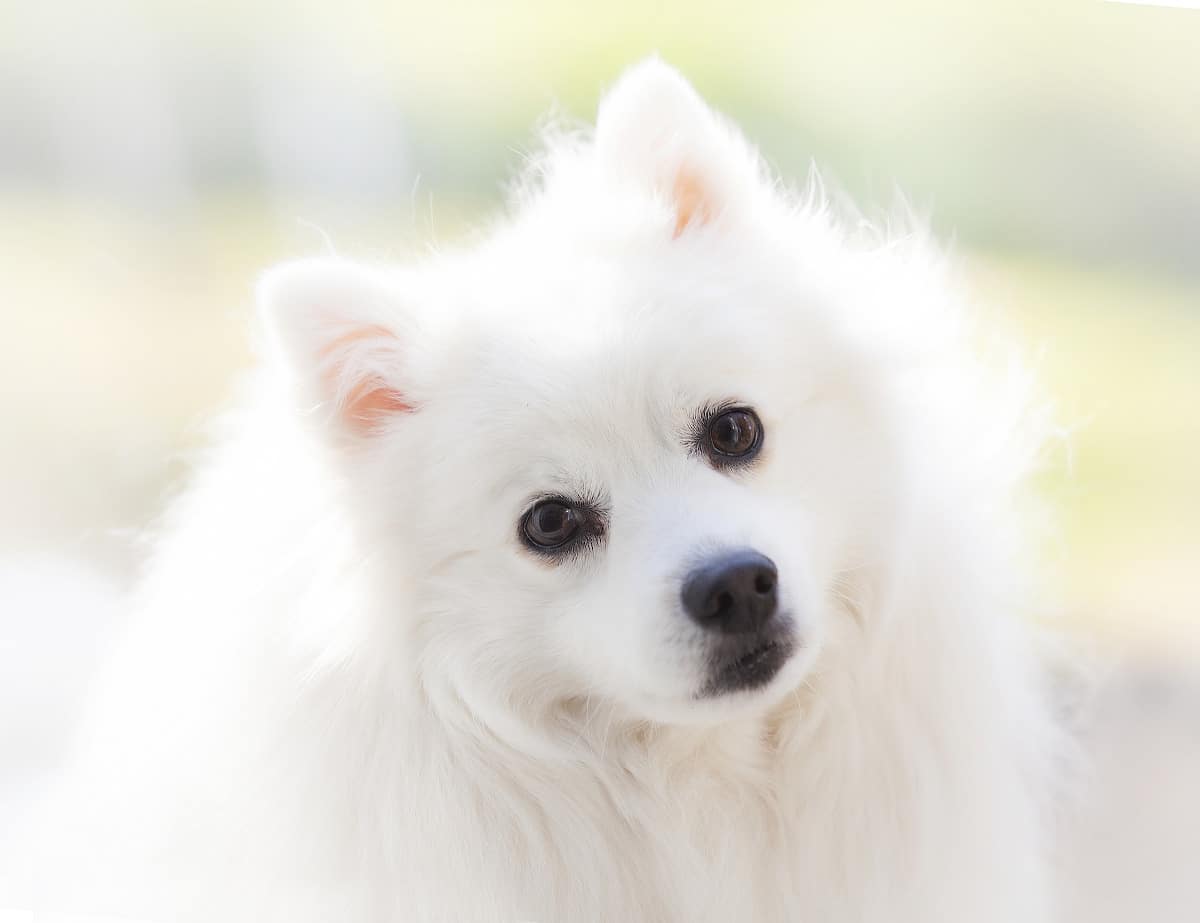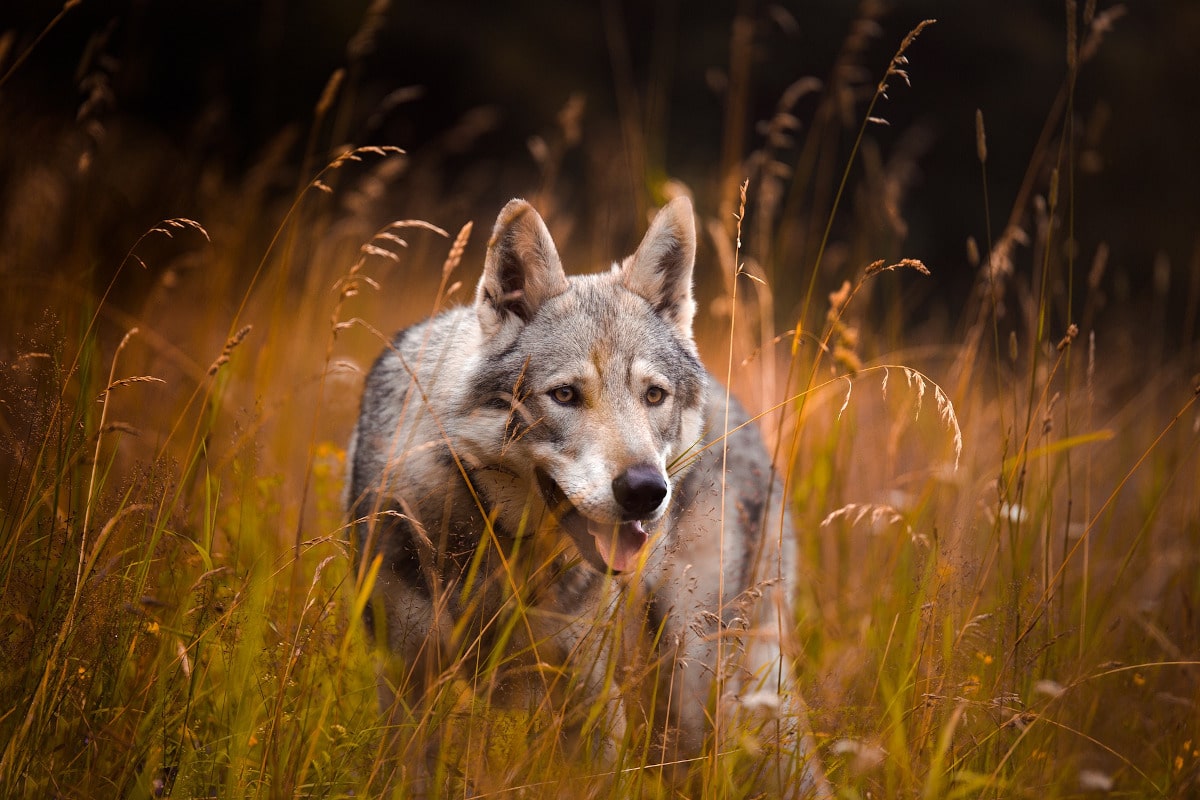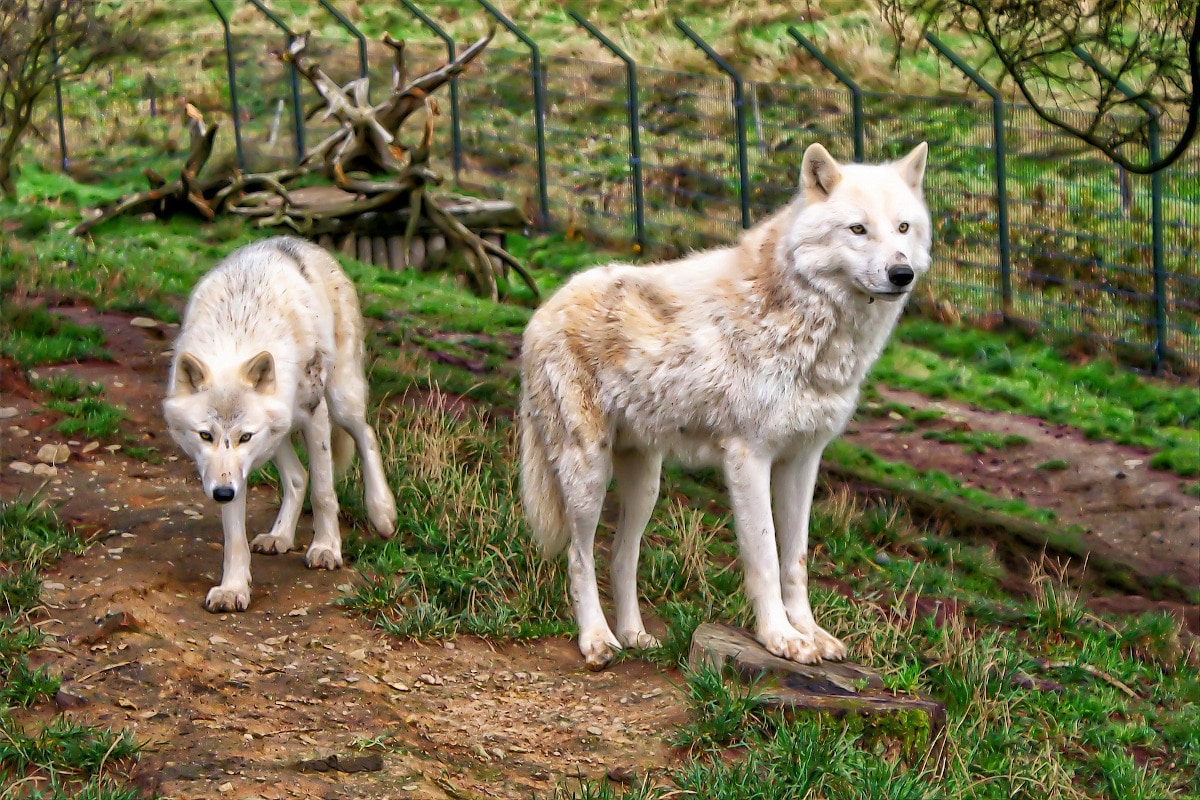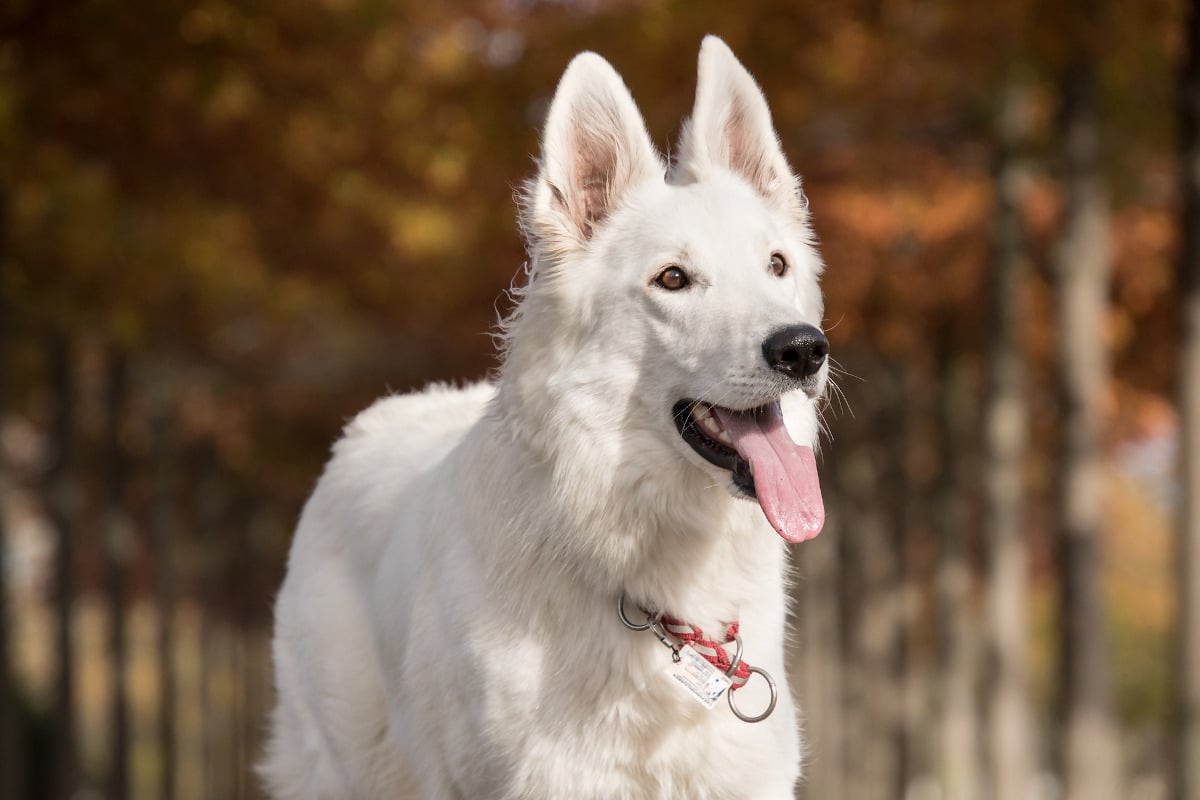
From this article we will tell you how the dog evolution. Mammals have dominated reptiles for 70 million years. Some of the species that lived at that time looked like bears, other hyenas, other felines, the species evolved or disappeared.
With regard to dogs it is known that the oldest that has been found is cynodictis, who lived 70 and 40 million years ago in the Asian and European continent. One was only seen on the American continent 25 million years ago, but already in a fairly evolved way. This era called Pseudocynodictis and was closely related to him cynodictis European.
The ancestors of dogs
El cynodictis had a very special anatomical appearance, with an elongated, flexible body, its limbs were quite short, with five fingers and retractable nails. The features were quite primitive.
10 million years later another dog lived in North America, named Daphoenus., whose characteristics seemed to be the result of a mixture between dogs and cats. Its skeleton was quite similar to that of a feline, with the skull of a dog or a wolf.
Then the mesocyon. Many scientists consider this as the direct ancestor of two other canids, the Cynodesmus (very runner) and the Takectus (with a skull similar to the current canines).
History and Origin of the dog

Sometimes we have wondered where dogs come from, what were their beginnings, why they exist and why there are so many breeds. Today we will know how were its beginnings chronologically until today, in itself the domesticated dog comes from an ancestor or ancestral group that dates back approximately 30,000 years ago, and from there it has spread throughout the world.
In the country of Israel Fossil remains of dogs buried next to humans were foundWe can see that since centuries ago the dog had a great meaning for people, we can see it in Egypt with the pharaohs in paintings, and little by little they have evolved in culture and population.
Dogs share the environment, habit and lifestyle of humansThere are even many people who adopt them as their children calling them perrichildren, interesting fact is that many diseases that humans have, such as Alzheimer's disease and other neurological disorders.
The origin of the dog has not been very simple and dates back 50 million years. The first canine with fossils is the Prohesperocyon that appeared 40 million years ago, but 30 million years ago the first canines appeared that were similar to the wolf and the jackal, these were originally from North America.
During its evolution, these canines were organized in packsThey hunted in groups and were noted for their large size and their tendency to hunt at night. At present, DNA studies have been carried out, finding that the dog, the wolf and the coyote share a lot of sequence of genetic load.
However, the similarity of the wolf and the dog predominates even more, but it does not mean that the dog is an evolution of the wolf, but rather that they share a common ancestor from which subspecies developed. The appearance of the first dogs was approximately 14 or 15 million years ago in the same area of Eurasia.
What is the evolution of the dog?
- 500,000 years before Christ prehistoric man and 200,000 thousand years before Christ: The first Canis Lupus (Wolves) of the Canis sinensis in China appear in Germany and America, the coyote in North America and the Fox and the Jackal in Europe.
- 30,000 to 15000 years before Christ: It was the time of the Great Hunt, but there were no dogs yet. 15,000 to 10,000 years before Christ appeared the domestic dog and skeletons of dogs and men that were discovered in Russia. There were also dogs without ears and long tails.
- 10,000 to 6,000 years before Christ: The Canis Farcolaris Palustris or bog dog, ancestor of the spitz-type breeds, appeared: Samoyed, Chow Chow, big poodle. The first dog appeared in the East and that is where most of the dog breeds originate.
- 4000 years before Christ- Dogs used for hunting appeared in Egypt. 3,000 to 2,000 years before Christ invention of writing in Egypt, time of Menes, XNUMXst Dynasty, representation of a greyhound, with a short tail or coiled on its back.
- 2000 to 1000 years before ChristHunting dogs imported from Ethiopia into Egypt during the New Empire. 1000 years before Christ, in Greece Aristotle lists seven breeds of dogs among them, the Molossians, the Laconian dogs, the Melithean, ancestor of the Maltese lapdog and the Epirote, a large and robust sheepdog.
How did wolf dogs evolve?
It is stated that dogs are the evolution of wolves and that this happened some 33 thousand years ago. According to the hypotheses of the experts, they highlight that it could have been a division between two populations of wolves and one of them could have later become domesticated dogs.
According to the theory, it indicates that the dogs of that time could have been domesticated by humans when they were looking for food. The domestication of dogs spread throughout the world, including their breeds. Therefore, the experts began to exploit the genetics of the dogs, thus achieving an increasingly different appearance of behavior.
The domestication of the dog

Dogs were not always man's best friend. Not only because of their evolution, but because they also had to go through a period of domestication. And we are talking about a fairly long period, since, according to the experts themselves, it is known that this It started at least 19.000 years ago, in Europe.
Specifically, and according to the analyzes carried out by some European scientists, it is estimated that the domestication of the dog began between 19.000 and 32.000 years ago, where they have also discovered a series of statements that attract a lot of attention and of which we make ourselves echo.
According to research published in the journal Science, the dog was not always a "friend" to humans. As you already know, this one had an evolution that made him go from wolf to dog, and from aggressive to being more affectionate with those who love him. But there was also a process of domestication.
In addition, it has been discovered that people who surely they managed to domesticate the dogs were the hunter gatherers themselves, thanks to his ability to train and tame the wild wolves that, over time, became the dogs of today.
A study that clashes with other claims
And it is that this statement of the study collides with others that established as Eurasia (the Middle East) or East Asia the domestication of these animals. In this case, the scientific evidence provided are the genetic sequences of contemporary dog breeds, which were compared with those of fossils from Asia, Europe and other parts of the world. This resulted in the European ancient wolves being the most closely related to the genetic chain, which makes it possible to say that the ancient domesticated dogs were from Europe.
How was a wolf domesticated to become a dog?
For sure we cannot know how was the domestication of dogs, since there is no written reference, but it is intuited that the process was quite long and gradually, since it took many years for them to evolve to how they are known now.
What you know from the studies that have been carried out is that surely the process occurred because both species benefited. Yes, both man and wolf benefited from this relationship, hence, little by little it began to sit down and cause changes, especially in animals (such as skin color, morphology, the size they acquired ... ).
How the human being benefited from the wolf
In this case, the human being and the wolf seem to be staunch enemies. And they really were; wolves could attack people and also animals or even the crops they had, so they could not be trusted.
However, there was a benefit of wolves: they defended them from other predators. Being close to the villages, many other animals did not approach because they understood that this was "territory" of the wolves, and rarely did another animal dare to confront them. This causes humans to only have to focus on wolves to protect themselves but indirectly, they (wolves) were the ones who already protected humans by "encircling" them as their target.
How wolves benefited from humans
Now, the wolves got their share of this too. We no longer enter into possible attacks on humans, animals or crops, but instead they could find food, either the remains of what the man left, or that they gave them to keep them calmer and to leave theirs alone.
In addition, many began to use human settlements as a place to shelter, either from low temperatures, inclement weather, heat ... With which they were recognizing that humans were not so "bad" and the relationship was being created.
In fact, it is said that it could be that approach by humans when offering them food (it is not known if to save other animals, crops, etc. in an attempt to leave them alone and thus be eaten so that they would not attack what they wanted) whatever would cause canine domestication to begin.
Domestication also through experimentation
In addition to the domestication of dogs in terms of their evolution, we must also refer to the multiple attempts by scientists to create different dog breeds. And it is that many of the races that we know today were not born naturally but were influenced by the hand of man.
In other words, wolves, dogs or whatever you want to call them, served as "guinea pigs" to test and create different breeds trying to get the best (or worst) in each one to get a different race in return.
Did that influence domestication? In a way, yes, since many of the breeds are more submissive than others because they tried to create dogs that were peaceful and did not have those aggressive genes that other breeds do.
Evolution of the dog for 100 years
Most breeds of dogs are products that humans have done experiments and tests, because they have paired different dogs so there are different breeds.
During the last 100 years the traits have been changing little by little, so some dog breeds are a little different and strange to what they were 100 years ago, these are some that the changes look very noticeable. It is called artificial selection to the genetic manipulation that humans have done to dogs.
What is the taxonomy of the dog?
First we must know what is taxonomy, this being the branch of biology in charge of classifying and naming each of the living beings. The dog belongs to the Phylum chordata, that is to say, of the chordates. These are individuals who have a dorsal cord. This cord provides some rigidity and in some cases it is replaced by the spine like the dog.
What are the characteristics of dogs?

Dogs themselves have many qualities and characteristics similar to those that a human being needs in order to survive, so we leave the list of their characteristics:
Socialization
It is a skill that they have innate when it comes to learning everything that they are taughtThat is why it is said that they are very intelligent animals. We must also highlight the degree of socialization they maintain with people, if they live in herds it will stand out more.
Communication
Dogs communicate in different ways as urine traces for marking, they sniff the person to want to tell him something, they can also use barking, grunting and even howling, in their body communication it is also important for their communication and they do it by wagging their tail, the paw indicates a state of fear or fear.
Reproduction
The females they reach sexual maturity after nine months and males around 15, but this is not entirely certain, since it will depend a lot on the breed of the dog, it can be before or after these parameters, the ideal by standard is to mate them at a year and a half.
Other characteristics that dogs have are:
- Average life: between 11 or 15 years.
- Food diet: non-strict carnivore.
- Energy needs: between 130 and 3,500 calories a day
- Dentition: they have 42 teeth.
- Body temperature: between 38 to 39 degrees.
- Pulse: between 60 and 120 beats per minute in puppies and older.
We hope this information has been of interest to you to get to know your furry friend better.
Well, how is it possible that I have seen another evolution of the buts with more abilities than normal and I have seen them but later he takes them to sell them to other countries, something similar